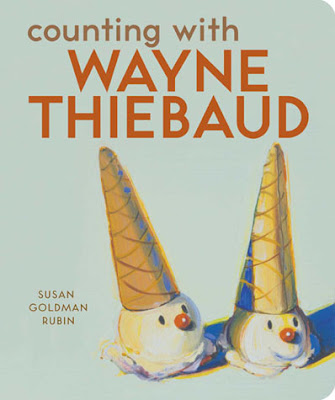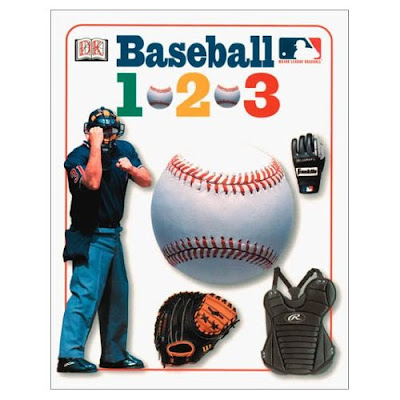I am relieved to anounce that my husband no longer thinks I belong in the looney bin. I have been to a few rock concerts in my day, and this event would most certainly compare. I tried to taks a picture of the crazy lineup, but even with panorama, I couldn't even start to fit it all in. It was nice to hear my husband say "wow! Is he really this big?" because to him, Robert Munsch just writes great children's stories. And then there were the hordes of screaming children, stretching their hands in the air for a chance to be in a story, never mind the endless autograph line. "See," I said to my husband. "It's not just me." He still thinks I am slightly more obsessive than the average parent ... and I porbably am.
Anyway, my hugest thanks to Robert Munsch and his very thoughtful and courteous staff. This household thinks that Robert Munsch is a fantastic person. I could not think of anyone who deserves success more. We will cherish the memory, forever.
What is your favourite book, by another author?
My favourite book by another author is a book called Blank Slate by Steven Pinker”
What is your favourite book that you have written?
Mortimer.
What book are you most proud of?
I think, Love you Forever.
Do you ever wish that you could go back and edit something in a book that’s already been published?
Oh yes. Sometimes I can get the publisher to change a book that is already out.
Do you have an example?
Mortimer, my first book, has five different texts, I think. Then the publisher said, “This is ridiculous. When they’re out, they stay out.”
Do you consider yourself a child masquerading as a grown up, or an adult who likes to be a child?
I consider myself an adult who likes to listen to children.
Was your childhood happy?
No.
Books like Millicent and the Wind and Stephanie’s Ponytail explore alienation and ostracism. Were you familiar with those, as a child?
Ah yeh. I didn’t do very well in school.
You often paint teachers and principals in an ill light. They are quite often the butt of jokes in books such as Show and Tell and We Share Everything. Are you playing to your audience or expressing childhood...
I’m playing to my audience and also getting revenge.
Characters such as Jule-Anne and Moira are very clever. Did you often outwit the adults, or is that an expression of an alter-ego?
It’s pure fantasy.
Speaking of alter-egos, I have heard you are a Batman fan. I was wondering, which one of your books do you think he would like?
I think Batman would like Purple Green and Yellow.
What was the inspiration behind From Far Away?
A kid wrote me a letter about her first Halloween in Canada. She had just arrived from the civil war in Lebanon and she freaked out. I used that letter to write that book.
Was there a specific thing in the story that touched you?
She was just so upset, I think that when she cried and her dad had to come and get her. And she didn’t know how to ask where the bathroom was and she crawled under people’s desks and snuck out of the room.
Speaking of the bathroom, my son’s favourite expression when he has to pee is “I have to go peeEE”. I was wondering, as a parent and a former daycare worker, do you have any potty training advice?
Be patient.
How did A Promise is A Promise come about?
I wrote it with an Inuit friend of mine, Michael Kusugak. I stayed with his family he told me about the Quallapilluit and we wrote that story.
Is that how Michael Kusugak got his start?
Yes that’s how come he got his start.
What was the inspiration behind The Paper Bag Princess?
I was telling stories to kids about princes and princesses, but they were just regular stories. Then one of the mothers said, “have you noticed there are not many princes is in this stupid lumber town. You should change that story.” So, I changed it and the kids liked it very much.
It is considered culturally significant, both in its message of self-esteem and feminism. Was that completely by accident, or was some of that intentional?
No. That was not by accident, actually.
So, that was quite intentional to do that?
Yes.
Do you receive many letters from adults?
I don’t receive a whole lot, but that is obviously an adult favourite.
Do you answer the letters from the adults, as well?
Yes.
What advice do you have to offer other writers?
Get a job, first.
Did you have any advice for editing?
Nobody’s first draft works, on some level. It requires constant revision to get it to where it needs to be. But you have to know when to say enough is enough. I would say, you’ll never get it just right. There eventually comes a point when you have to say “stop”. It never gets good enough.
Did you always want to be a writer?
No. I wanted to be anything but a writer. I couldn’t spell in school. My boss made me be a writer. I put off writing but my daycare boss told me he would fire me if I didn’t try writing down a story.
How important do feel it is for a children’s writer to immerse themselves in childhood culture?
I don’t know the answer to that. Dr. Seuss who wrote such wonderful books had virtually no contact with children. I on the other hand, have lots of contact with kids and that works for me, but I don’t think there is a general rule about that.
Do you have any advice on how writers can immerse themselves in children?
Go visit a daycare centre.
Are you an organized person?
No.
Do you write down your ideas or do you store them in your head?
When I start getting a story that I think works, I put it on a list. But that’s about it.
Do you write down the children’s names to remember them? [Robert Munsch uses real children as characters in his books]
No. I just call it, if it’s about Shelly, I’ll remember it as Shelly’s story. Then if I think it’s going to be a book, I contact Shelly so I can contact her. I write a draft, then five years later when it becomes a book I can say, “hey, you’re going to get a book”. Then I send her an autographed copy.
Do you have an agent?
No.
Do you think that it’s beneficial to maintain loyalty with one publisher?
Yes because the more books you have with a publisher, the more work they will do for you. If you scatter yourself all over the place, you’re not that valuable, unless you’re Stephen King.
Do you still receive rejections?
I just went with one publisher, but we don’t agree on what stories to do. I have lots of stories and it’s hard for me to get the ones I want out. Like I have over one hundred and fifty to choose from, now, on file with my publisher.
I heard that Love You Forever was one of those.
Yes, Love You Forever was one of those. My first publisher rejected that.
To what do you attribute the success of Love You Forever?
The depth of love between children and parents and families. You can love people and you can be driven crazy by them. There is a way of saying you like someone without being smothering. And it’s about life and death.
I have a few questions for the children readers.
Do you have any hobbies?
I like to walk my dog, I like to take long walks in the woods and I like to climb trees.
What are you afraid of?
Bees.
Who is your favourite person?
My favourite person? Hmm. My children.
Do you have a favourite food?
That changes a lot. I think right now, it is Indonesian coconut soup.
Do you watch T.V.?
I don’t have any shows that I like to watch.
Are you often recognized by children?
No, although I am in bookstores.
What is something that people would not know about you?
I used to yell at my kids and they would yell back. I was not the perfect parent.
I think people would be very relieved to know that. With more than one hundred stories on file with your publisher, what can we expect next?
Two books a year for a long time.
No hints on the next one?
The next one is going to be called One More Goal. It’s about a girl named Sierra, from Hay River, in the North West Territories. It’s a hockey story. I’ve written many books, but never any hockey stories.
note: Unless you are a grade school student doing a class project, any reproduction of this interview, by any means, is prohibited without the written permission of Robert Munsch, as well as the author of this site.






Hmm, for some reason this post went up without the comment link. I fixed it but I wonder if anyone had any comments in the meanwhile.
Like Jules (see the post above this one). Jules, I agree, the point and purpose shouldn't be about lecturing lapsitters about art history, nor am I suggesting in the least (something else I didn't make clear) that "regular" picture book artists are in any way lesser artists in their own right.
But there is so much out there in the board book world that has very little thought or energy behind it and it doesn't seem like it would take that much more effort to gain quality.